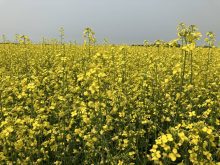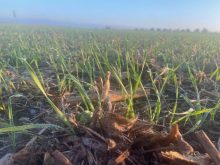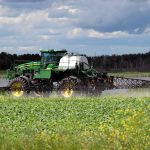Ducks Unlimited Canada is encouraging farmers not to till their fields if they plan to seed winter wheat this year.
Instead, DUC is encouraging chemfallow to control weeds on unseeded acres while still retaining some stubble as a snow trap for winter wheat.
“Growers considering seeding winter wheat into unseeded chemfallow acres need to conduct weed control operations with stubble conservation in mind,” said Paul Thoroughgood, a DUC regional agrologist.
“Allowing weeds to grow to a reasonable size prior to spraying can help increase the snow-trapping ability of chemfallow.”
Read Also

CUSMA access key among other trade noise: Seeds Canada panel
Seeds Canada conference panelists say Canada needs to stay focused and wait as U.S. trade and tariff chaos develops, and a Canada-U.S.-Mexico Agreement review looms
Widespread flooding across the Prairies this spring left millions of acres unseeded and drowned out several million more seeded acres. This has raised the prospect of more winter wheat being seeded this year.
But winter wheat growers are strongly encouraged to seed into stubble, which traps snow and limits the risk of winterkill.
The Manitoba Agricultural Credit Corporation provides full crop insurance coverage only to winter wheat crops seeded into “eligible” stubble. That means undisturbed stubble from a crop that is harvested in the same year winter wheat is seeded.
MASC lists 25 crops that qualify for eligible stubble.
“Producers that plant winter wheat into summerfallow or a non-eligible stubble are still eligible for insurance. However, their insurance is limited to a reseeding benefit only,” said David Koroscil, MASC’s insurance projects and sales manager.


















